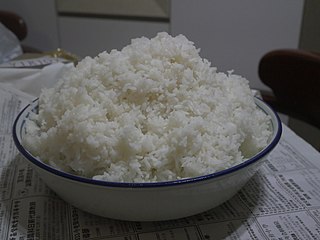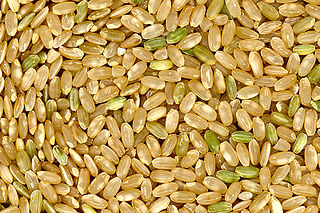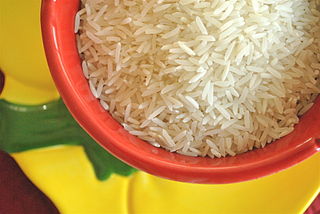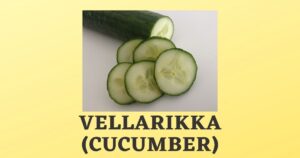Glycemic Index of Rice
What is the GI Index of Rice?
- Glycemic Index (GI) of Rice is 72
The glycemic index (GI) is a measure that helps us understand how quickly a particular food raises our blood sugar levels after consumption. It is especially relevant for individuals with diabetes or those who are managing their blood sugar levels. The GI scale ranges from 0 to 100, with higher values indicating that a food has a greater impact on blood sugar levels.
When it comes to rice, the glycemic index can vary depending on the type of rice and how it is cooked. Generally, rice is categorized into three main types: white rice, brown rice, and wild rice. These types differ in terms of processing and nutritional composition, which can influence their glycemic index values.
White rice, which is the most commonly consumed type, undergoes extensive processing that removes the bran and germ layers, resulting in a polished appearance. This processing also removes much of the fiber and nutrients, leaving a starch-rich endosperm. As a result, white rice tends to have a higher glycemic index compared to brown rice and wild rice.
Brown rice, on the other hand, retains the bran and germ layers, which contain valuable nutrients like fiber, vitamins, and minerals. The presence of these components slows down digestion and absorption, resulting in a lower glycemic index compared to white rice. Brown rice is often considered a healthier option due to its higher nutrient content and lower glycemic index.
Wild rice, which is technically not a type of rice but a seed from aquatic grasses, generally has a lower glycemic index than white rice. It is rich in fiber, protein, and various nutrients, making it a nutritious choice. However, wild rice may be less readily available and more expensive compared to other rice varieties.
The method of cooking rice can also affect its glycemic index. Overcooking or over-processing rice can increase its glycemic index because it breaks down the starches into simpler sugars that are quickly absorbed by the body. On the other hand, cooking rice with less water or cooling it after cooking can cause the starches to form resistant starch, which lowers the glycemic index.
It’s important to note that the glycemic index is a relative measure and should not be the sole determining factor in a healthy diet. Other factors, such as portion sizes and overall meal composition, also play a crucial role in managing blood sugar levels. Additionally, individual responses to different foods can vary, so it’s always best to consult with a healthcare professional or registered dietitian for personalized advice.
White Rice Glycemic Index

White rice is a staple food consumed by millions of people around the world. It is a primary source of carbohydrates and provides energy for various cultures and cuisines. The glycemic index (GI) of white rice refers to how quickly it raises blood sugar levels after consumption.
What is the GI Index of White Rice?
- Glycemic Index (GI) of White Rice is 79
The high glycemic index of white rice (79 GI) can be attributed to its processing. During the milling process, the outer bran and germ layers are removed, leaving behind the starchy endosperm. This processing strips away much of the fiber, vitamins, and minerals present in the rice, making it less nutritious compared to other rice varieties like brown rice or wild rice.
Without the fiber and other nutrients, white rice is easily broken down into glucose, a simple sugar, during digestion. This rapid breakdown causes a rapid increase in blood sugar levels. Foods with a high glycemic index, like white rice, are digested quickly, leading to a quick release of glucose into the bloodstream.
The speed at which white rice is digested and its impact on blood sugar levels can have implications for individuals with diabetes or those aiming to manage their blood sugar levels. For people with diabetes, consuming high-glycemic-index foods like white rice can lead to spikes in blood sugar levels, which may require careful monitoring and medication adjustments.
However, it’s important to note that the glycemic index is not the sole factor to consider when making dietary choices. Portion sizes and the overall composition of a meal, including protein, fat, and other carbohydrates, also play a role in determining the impact on blood sugar levels.
There are ways to mitigate the effects of white rice’s high glycemic index. One method is to pair it with other foods that have a lower glycemic index, such as protein-rich foods like fish, chicken, or legumes, and fiber-rich vegetables. This can help slow down the digestion and absorption of carbohydrates, resulting in a slower and more gradual increase in blood sugar levels.
Another approach is to opt for varieties of rice with a lower glycemic index, such as brown rice.
Brown Rice Glycemic Index

Brown rice is a whole grain rice that is considered a healthier alternative to white rice due to its higher nutrient content. The glycemic index (GI) of brown rice refers to how quickly it raises blood sugar levels after consumption.
What is the GI Index of Brown Rice?
- Glycemic Index (GI) of Brown Rice is 59
The glycemic index scale ranges from 0 to 100, with higher values indicating a greater impact on blood sugar levels. Compared to white rice, brown rice generally has a lower glycemic index (59 GI), meaning it is digested and absorbed more slowly, resulting in a slower and more gradual increase in blood sugar levels.
The lower glycemic index of brown rice can be attributed to its intact bran and germ layers. Unlike white rice, brown rice retains these layers during processing, which contain valuable nutrients, including fiber, vitamins, and minerals. The presence of fiber in brown rice slows down the digestion and absorption of carbohydrates, leading to a more gradual release of glucose into the bloodstream.
Fiber plays a crucial role in regulating blood sugar levels because it forms a gel-like substance in the digestive system, which slows down the breakdown of carbohydrates. This slow and gradual digestion helps prevent spikes in blood sugar levels and provides a more sustained release of energy.
Furthermore, the higher nutrient content of brown rice, including vitamins and minerals, contributes to its overall health benefits. These nutrients support various bodily functions and provide additional nutritional value compared to white rice, which is stripped of many of these nutrients during processing.
It’s important to note that the cooking method can also influence the glycemic index of brown rice. Overcooking or over-processing brown rice can increase its glycemic index because it breaks down the starches into simpler sugars that are quickly absorbed by the body. On the other hand, cooking brown rice with less water or cooling it after cooking can cause the starches to form resistant starch, which lowers the glycemic index.
Incorporating brown rice into a balanced meal can be beneficial for individuals with diabetes or those aiming to manage their blood sugar levels. Its lower glycemic index and higher nutrient content make it a healthier choice compared to white rice.
However, it’s essential to consider portion sizes and the overall composition of the meal. Combining brown rice with other foods that have a low glycemic index, such as protein-rich sources and fiber-rich vegetables, can further slow down digestion and help maintain stable blood sugar levels.
Basmati Rice Glycemic Index

Basmati rice is a long-grain aromatic rice variety that is commonly used in many Indian and South Asian cuisines. It is known for its distinct flavor, fluffy texture, and fragrant aroma. The glycemic index (GI) of basmati rice refers to how quickly it raises blood sugar levels after consumption.
What is the GI Index of Basmati Rice?
- Glycemic Index (GI) of Basmati Rice is 55
The glycemic index scale ranges from 0 to 100, with higher values indicating a greater impact on blood sugar levels. Basmati rice, particularly certain varieties like aged basmati rice, is generally considered to have a lower glycemic index (55 GI) compared to other types of rice, including white rice.
The lower glycemic index of basmati rice can be attributed to several factors. First, the amylose content in basmati rice is higher compared to other rice varieties. Amylose is a type of starch that takes longer to digest, resulting in a slower release of glucose into the bloodstream. This slower digestion contributes to a lower glycemic index.
Second, the specific variety and cultivation techniques of basmati rice can influence its glycemic index. Aged basmati rice, which has been stored for a certain period before consumption, is often associated with a lower glycemic index. This aging process allows the rice to lose some moisture and change its starch structure, leading to a slower breakdown and absorption of carbohydrates.
However, it’s important to note that the glycemic index of basmati rice can still vary depending on the specific variety and processing methods. Additionally, cooking methods can also impact the glycemic index of basmati rice. Overcooking or over-processing basmati rice can increase its glycemic index, while cooking it with less water or allowing it to cool after cooking can decrease the glycemic index.
While basmati rice generally has a lower glycemic index compared to other rice varieties, it’s essential to consider portion sizes and overall meal composition for blood sugar management. Pairing basmati rice with protein-rich foods, healthy fats, and fiber-rich vegetables can further slow down digestion and help stabilize blood sugar levels.
It’s worth mentioning that individual responses to food can vary, and the glycemic index is not the sole factor to consider when making dietary choices. Other factors, such as the overall quality of the diet, physical activity levels, and individual metabolic responses, also play a role in managing blood sugar levels.








